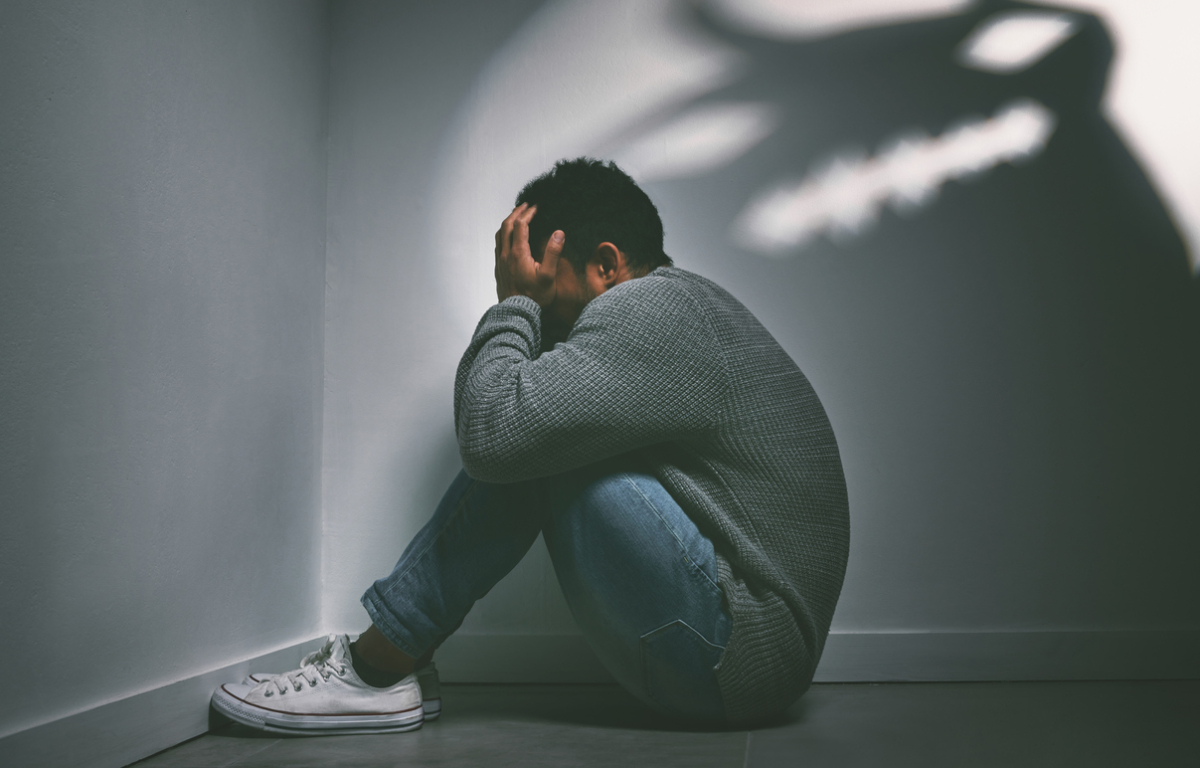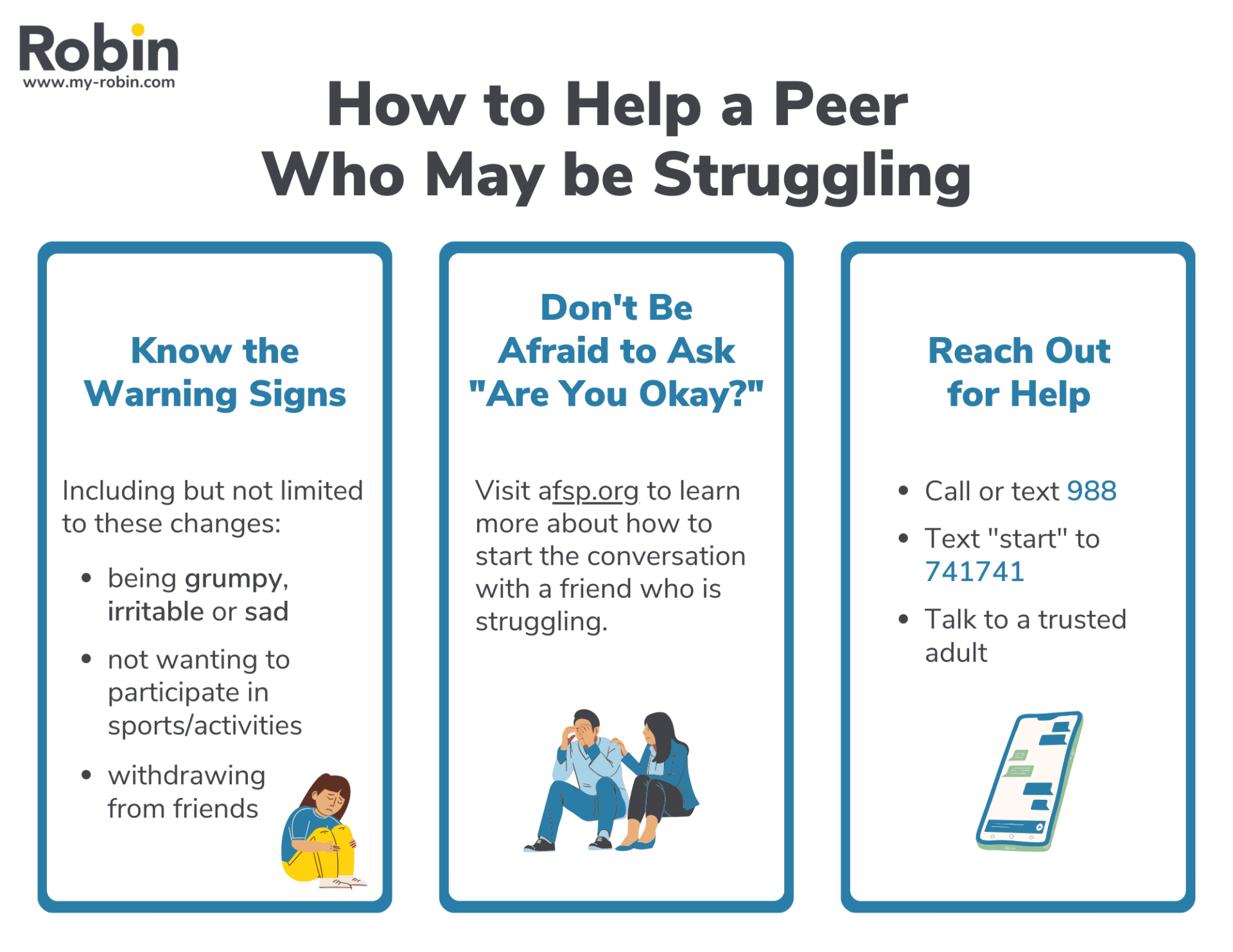
Content Warning: This blog and accompanying webinar discusses suicide and related subject matter that may be triggering to some readers.
In recognition of Suicide Prevention Awareness month, Robin Coach and Clinical Psychologist Dr. Colleen Jacobson joined us for a special Webinar on how we can identify youth who may be at risk for suicide and how to best support these students in the moment and longer-term. She answered some very insightful and vulnerable questions from the audience on the subject. Read the takeaways below or watch a recording of the webinar.
The State of Youth Mental Health
The state of mental health in this country, especially among our young people – adolescents and children – is at a critical point. According to the CDC, over a third of today’s youth report experiencing symptoms of depression, with girls (47%) and LGBTQ+ youth (66%) experiencing symptoms at substantially higher rates. A PEW Center Survey conducted in 2020 found that 70% of teens are reporting anxiety and depression as major problems in their lives. In addition, 27% of adolescents from the ages of 12 to 17 have one or more diagnosed mental, emotional, developmental or behavioral problems.
Suicide is the 2nd leading cause of death among 15-24 year olds; 20% of youth in that range reported seriously considering suicide in the past year and 9% of that group reported actually making an attempt.
It also found that 20% of youth in that range reported seriously considering suicide in the past year with 9% of that group reported actually making an attempt.
What are the Signs of Psychiatric Impairment &/or Increased Suicide Risk?
Some signs that might indicate a child is struggling or in need of intervention include:
- Withdrawal from social, academic and physical activities such as spending time with friends or family, participating in sports, and paying attention/attending class
- An increase in outbursts, irritability, crying, and relationship conflict signs
- Sudden changes in sleep, appetite, hygiene or the way they dress and decrease of eye contact
Some potentially less obvious signs that could be indicators of suicidal ideation include:
- An increase in laughing when it feels unnatural or manic
- A sudden positive shift in mood, for example if they are acting unusually happy after a long down period
What are some Risk Factors for Suicide?
There are several risk factors for suicide. Males are more likely to die by suicide, whereas females are more likely to attempt suicide. 90% of suicidal individuals have a diagnosable mental illness, which is the most significant risk factor. Others include prolonged stress, traumatic life events, serious physical illness and access to lethal means, such as a gun or a high dose of drugs. Falling under several of these categories, bullying is a major risk factor, both for the individual being bullied and the bully themself. Having a family member who died of suicide also puts a person at higher risk.
When we talk about risk factors, it’s often the combination of multiple risk factors, including predisposed genetic loading and environmental stressors, that overwhelm the student’s coping mechanisms.
What do I do if I Think a Student is Struggling?
If you’re concerned about one of your students, the most important thing right off the bat is to engage: don’t be afraid to check in and ask the student how they’re doing.
To remove the stigma and fear we need to be okay asking kids if they’re okay.
There’s a common misconception that asking a child if they’ve had thoughts of suicide might increase their risk. This couldn’t be further from the truth. Multiple researchers have proven that asking a child whether they’ve been experiencing suicidal ideation actually helps facilitate intervention and does not increase their risk.
If they have been thinking about it, they’ll be relieved to finally have the opportunity to open up about it with someone they trust. If they haven’t been struggling with suicidal thoughts, they’ll tell you so. Regardless, you’ll be able to gauge the level of crisis and determine next steps more clearly.
It’s critical that you validate the student’s feelings. Adults in their lives, including parents, might invalidate and minimize their child’s feelings, even if they don’t do so intentionally. This teaches the child not to trust their own feelings and makes it much less likely for them to open up about their very valid struggles.
This is not just a phase, this is real. And students need to know that you take them and their feelings seriously.
Just giving them HOPE and reminding them that they’re not alone can make a huge difference. “You’re not always going to feel this way and there are people that can help you.” You can also inform them of treatments that work and/or encourage them to talk to a professional. For students with less supportive parents or lack of means, more accessible options to traditional therapy exist, such as Betterhelp.com.
What are Preventative Actions that Schools can Take?
It’s so important for schools to take a proactive, rather than reactive, approach to mental health and suicide prevention awareness education. There are several actions this can take the form of:
- Start by fostering connectedness and a culture of belonging. School connectedness is proven to have long lasting effects on youth mental health resulting reduced suicidal ideation as well as decreased risky behaviors and increased attendance. (CDC)
- Proactive (vs reactive) education on mental health and suicide prevention awareness
- Identify and communicate to the entire community the key resources for getting help including national hotlines, local mental health providers and accessible therapy options such as BetterHelp.
- Provide visual aids around the school so students know how to get help (such as the poster below, available here).
- Integrate social-emotional and mental health curriculum so all students have access to coping skills and tools
- Make room for students to have conversations on an ongoing basis.
- Train all instructional and non-instructional staff on how to identify and support a student who is struggling
- Tier 2 school-based mental health programs
- Consistently communicate and educate parents
In addition to mental well-being and social emotional learning curriculum, Robin can provide suicide prevention support and training for educators and administrators. Please connect with us to learn more.
About the Coach

Dr. Colleen Jacobson.
Colleen is a licensed clinical psychologist and professor with over 20 years of experience in researching, teaching and counseling young adults. Leveraging tricks and trades of psychotherapy, Dr. Jacobson teaches and supports Robin students on how they can more effectively cope with life issues and mental health challenges to live their best lives.
Meet Colleen
